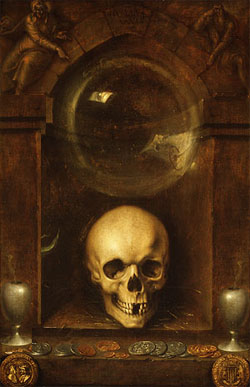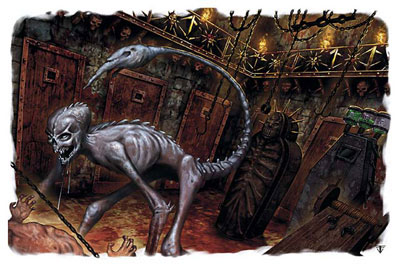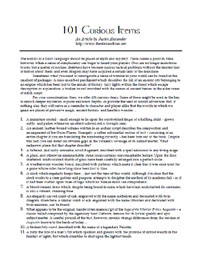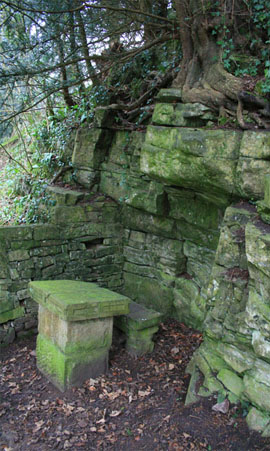This article was originally published in the June 2002 issue of Campaign Magazine.
 There’s nothing more delightful for a GM than slipping a cursed magic item to the PCs and watching the hi-jinks which ensue – not to mention the appalled faces of their players when they finally figure out what has happened to them. It’s a way of adding a little humility to the personality of overblown heroes, and reminding even the mightiest that their fall may be just around the corner.
There’s nothing more delightful for a GM than slipping a cursed magic item to the PCs and watching the hi-jinks which ensue – not to mention the appalled faces of their players when they finally figure out what has happened to them. It’s a way of adding a little humility to the personality of overblown heroes, and reminding even the mightiest that their fall may be just around the corner.
The problem, though, is that the very caution you are attempting to instill eventually makes it increasingly impossible to go back to dip into that well again. Most players, quite wisely, take the course of “fool me once, shame on you; fool me twice, shame on me”: Once a player has had his PC victimized by a cursed item once, every magic item which enters the campaign from that point forward will be exhaustively identified before it is used (or, in most cases, even touched).
What’s a poor GM to do?
Put the snare where the PCs least expect it, of course – where they will probably never even bother checking for magic in the first place, let alone curses. If they’ve already got their head through the noose before they think to look around, it’ll be too late for them to escape from the trap.
The question then becomes: Where? Finely made arms and armor, of course, are immediately scanned with detect magic and the like (while the poorly made variety are usually just left behind). Wands and staffs, of course, are obvious candidates that will never pull the wool over the players’ eyes. But it’s hit-or-miss whether other types of treasure will be picked up by the PCs at all. Heck, the only thing they’re guaranteed to take out of the dungeon are the gold coins…
Wait a minute.
Here are some examples of wealth which the PCs will wish had never been ill-gotten…
COIN OF FATE
Despite its normal appearance, the presence of a coin of fate cannot long be ignored: These powerful, chaotic items play upon the very laws of probability – randomly making the simplest of goals unachievable, while rendering the impossible possible.
Whenever a character attempts an action requiring a check within 20 feet of a coin of fate, do not resolve the action normally (although you may still wish to go through the motions of normal action resolution for the sake of the players). Instead, roll 1d100 in order to randomly generate a chance of success. Then roll 1d100 again in order to determine success: If the second roll is lower than the first roll, the action is successful. If it is higher, the action is unsuccessful. The greater the difference between the first and second rolls, the more obvious the twisting of probability becomes. (In other words, a narrow margin of difference between the two rolls would have the appearance of normality. On the other hand, a wide margin of difference between the two rolls might result in something completely improbable – for example, a character’s sword flying out of his hand, ricocheting off a tree, and then impaling itself in the back of the ogre he was trying to hit in the first place.)
There is one constant effect which the presence of a coin of fate will have: Any coins flipped within the affected area will always land on their edge.
Caster Level: 7th
Prerequisites: Craft Wondrous Item, bestow curse
Market Price: 42,000 gp














